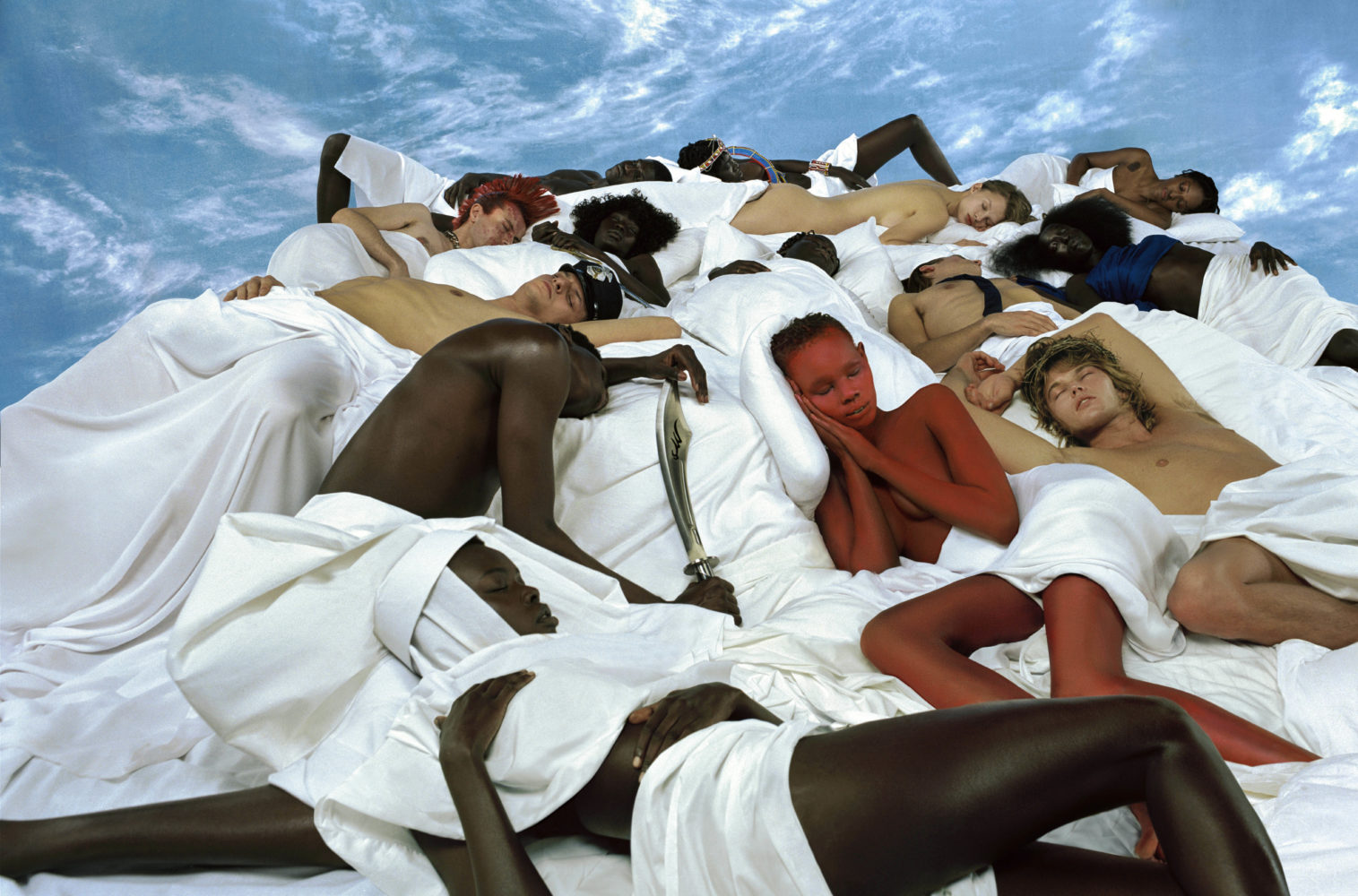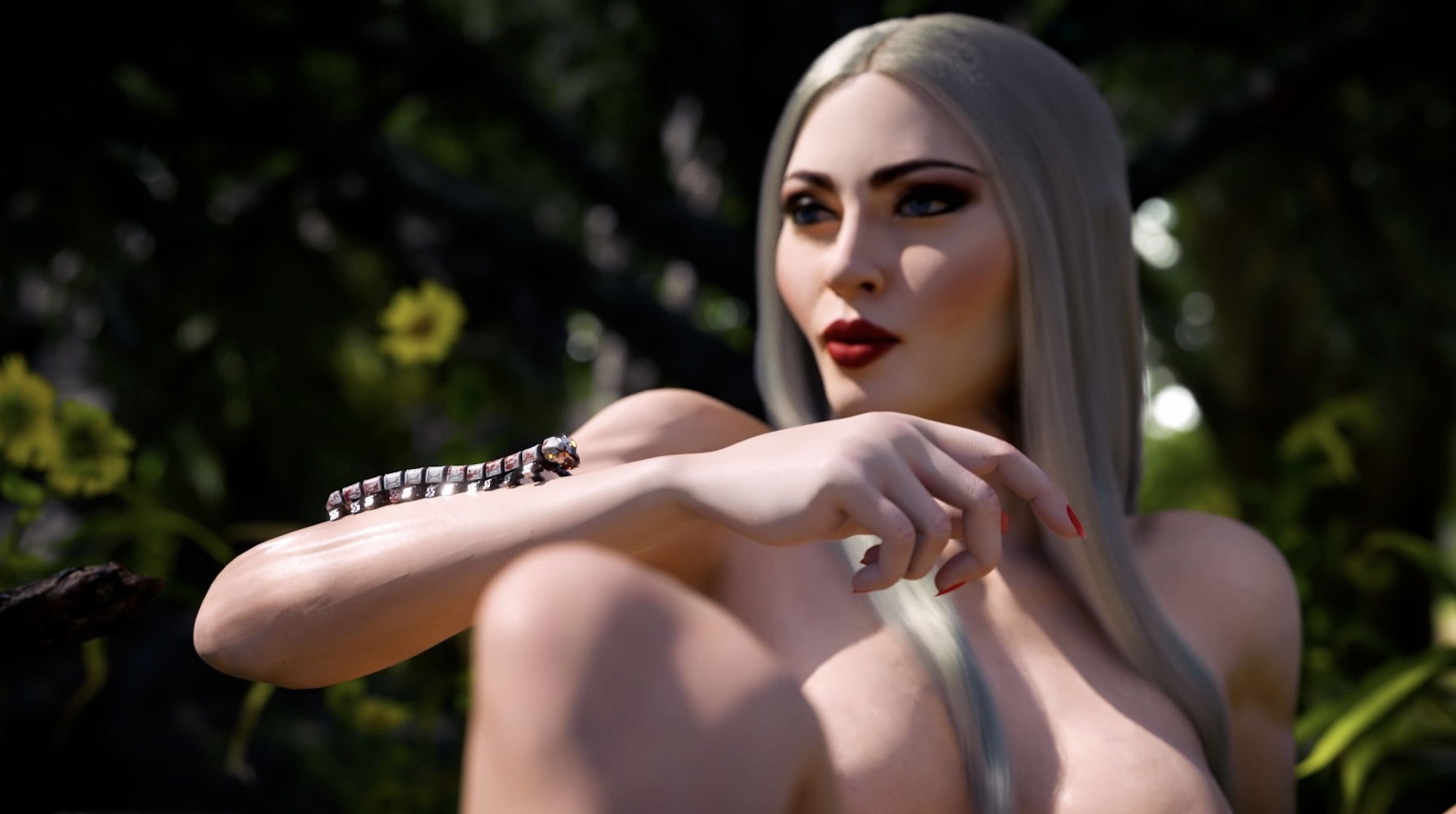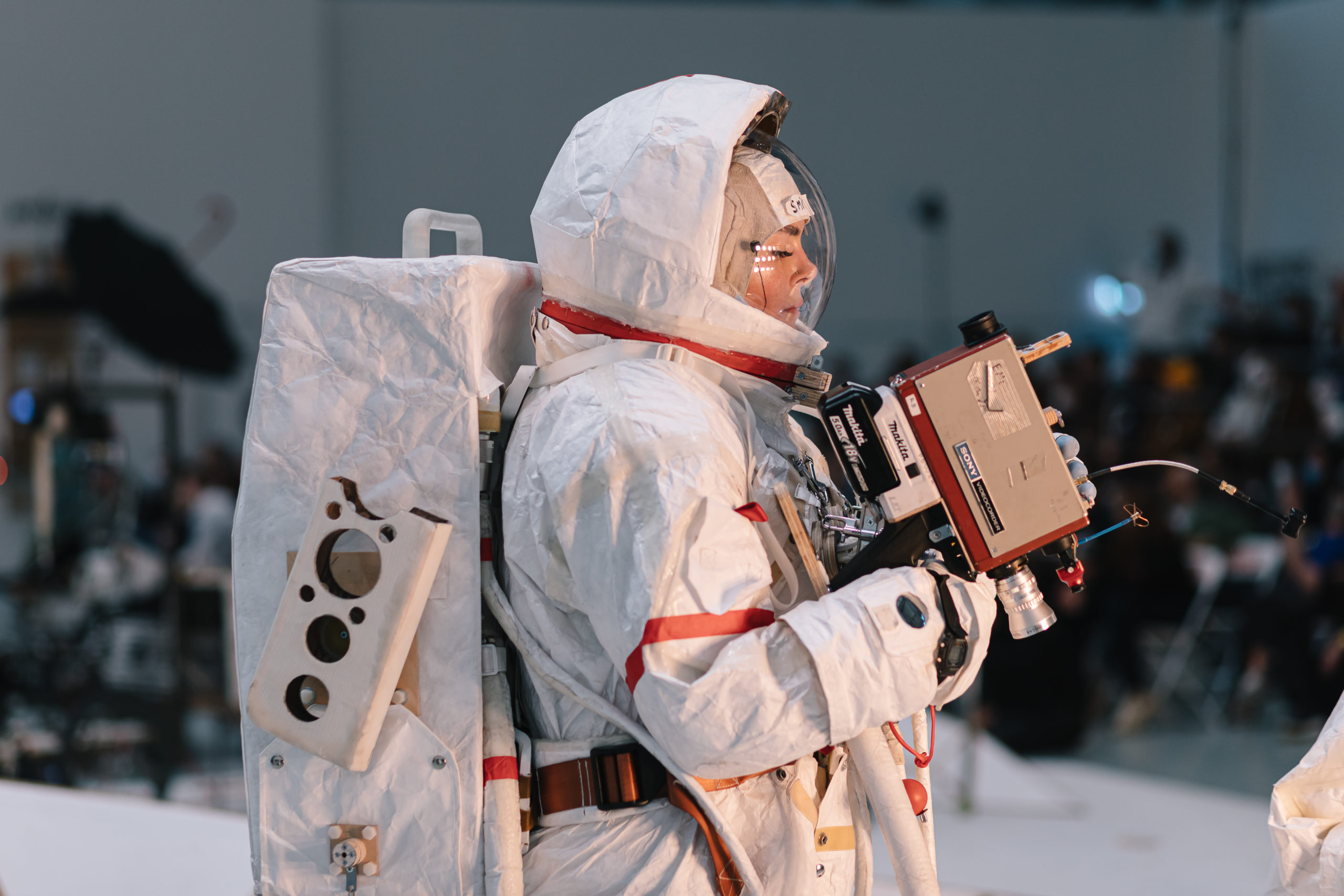In February, the French photographer Hugo Comte collaborated with the stylist and editor-in-chief of Dazed, Ibrahim Kamara, on the exhibition “Testament” at Galerie Hussenot in Paris. It featured 15 monumental photographs that proposed new ideas about belief structures and mythologies. Timed to the show’s opening, he released the proprietary digital token $NIKITA WORLD with P00LS, a handful of new NFTs on the Foundation platform, and a physical clothing collection entitled “Dear Nikita.”
Comte’s multidimensional projects are the result of the past year amid the ongoing pandemic, desiring connection now more than ever. After amassing a large online following from his photographs of names like Dua Lipa and Naomi Campbell and brands like Prada and BVLGARI, he felt the need to break down barriers and let his audience in.
Whitewall spoke with Comte to learn why he’s ready to relinquish restraint and let creativity drive.

Hugo Comte at Galerie Hussenot, courtesy of Hugo Comte.
WHITEWALL: How did the exhibition “Testament” come to fruition?
HUGO COMTE: The origin of this project was for me to express who I am and go as deep into my consciousness as I could. This happened with time. When I started to have the first flash of ideas, it was almost non-intentional. It was visceral, an urge. I wouldn’t even say there was meaning in the beginning; it was more of a dream.
After, I sat down and asked what the vision was, questioning what the meaning and intention were. Then I gathered references and began to build the body of work around it. It’s an idea about the question of mythology—believing in gods, cultural symbols and icons, rituals and ceremonies, and eras—like Roman, Greek, Egyptian, African.
Right away, I thought about Ibrahim to collaborate with on this because he shares the same freedom in allowing himself to create new mythology using codes, Western heroes, and icons to flip them and put Africanism on a pedestal, a mix of beliefs coming together. Right away, he loved it. We created a narrative around the concept, narrowed it down, shot a bunch of images, and then narrowed it down again. We allowed ourselves to believe the body of the image really meant something else, and then asked, “What does that really mean? What is the inner sense of what we produced?” We tried to really extract those narratives afterward and create new narratives from what we had.
WW: Has time amid the pandemic changed the way you think about your practice?
HC: Completely. It was a reconciliation moment, where I was not depending on the pace of making money, taking commercial jobs, being on-demand constantly. I could sit down and ask who I was as an artist and who I was as a person, and embrace the responsibility of having credibility and visibility of an audience. If I have visibility and credibility, it means I have an influence on what people like, and I have a responsibility to give the right message.
My fashion photography used to be very much about the attitude, the personality, the character. Here, it’s completely different. It’s questioning culture, race, religion, politics. It’s another way to embrace sincerity in who I am and what I want to produce. I don’t think without being out of the commercial working pace I would have been able to do it as precise and sincere as this.
I haven’t ever been someone who is just about a medium; I’m more about a vision. And whatever is the easiest medium to make sense in a precise time to express myself, then I’ll do it. When I started photography, it just made sense. It was available and it was the right time. Now, I feel like I can express myself with so many other things. I think the next step of this show will be presented in different ways.
WW: Would that be digitally?
HC: I’m working on translating the image into 3-D files that would then be generated into 3-D printing. That will be used to do casts, and then those can be used to make pediment-style sculptures. I made 3-D renders on Photoshop, which gives me data, so I can provide that to a 3-D printer and get height and volume. To make this, it costs a lot of money, so I’m selling this as an NFT.
WW: How are you approaching Web3?
HC: For me, there is a conflict in translating an idea in the real world. In the imaginary world, there is no measurement, but in the real world, there is. What’s interesting with expressing myself through Web3 is that I’m not going from imaginary to real, I’m going from imaginary to virtual. I feel that that bridge solves most of my problems. So I’m basically creating abstract spaces that can’t be built in the real world and building a bridge between architectural function and Internet utility.
WW: $NIKITA WORLD is one of those types of spaces you’re creating now—a social token that provides access to a digital universe that features multilevel chambers of content. What’s the concept behind this?
HC: It’s all about architecture, structure, and atmosphere. I’m so passionate about many architectural concepts that I developed in architecture school, and I genuinely think it’s great stuff. So, when I had the first conversations with Hugo Renaudin, the founder of P00LS, the company I’m working with on the social token, we instantly started to build.
Here, each cube in the world is a different level that defines token- gated accessibility. Each level is ruled by a certain level of tokens you must own to access that space, featuring its own curated content. One space hosts a masterclass with guests. There’s a curated NFT gallery with a private room, an archive room, and a more public room with news and current work.
You could think that in order to go from level one to level five, you just need to buy enough to get there. To me, that’s represented by a stair that can go from top to bottom. But here, you need to cross the entire platform in order to reach the stair on the other side. I’m reinstalling the idea of time and patience into using the Internet. Here, if you have a coin, you need to wait. I want to give value to things other than money, like loyalty. Money is not the only currency in this world.
WW: Why did you want to create “Dear Nikita,” your 100-piece capsule collection?
HC: “Dear Nikita” is like a letter I’m addressing to someone named Nikita— my abstract, imaginary muse that I’ve been trying to portray in most of my pictures. It’s an imaginary character with a complex, complicated character that’s the fruit of my relationship with motherhood, sexuality, who I am as a man, my feminine aspects. It’s like this huge question of gender, love, intimacy, being a woman, being a man. Nikita is a genderless name, and it’s about imagining what this person would wear. There are tributes to the formalities of a suit done in a colorful, Pop way; a tribute to motherhood with a piece featuring a Roman god, hanging from the neck.
This project is about who is going to wear the clothes, not just a conceptual art project. That’s why I’ve priced it like this—60 bucks, 100 bucks. I wanted it to be accessible. “Dear Nikita” is like a space. When you’re navigating a space, like a house or a museum, it was imagined by an architect to make you feel and behave in a way that’s subconscious. With clothing, it’s the same. It’s not super intellectual; it’s about freedom, Pop, youth, freshness.










